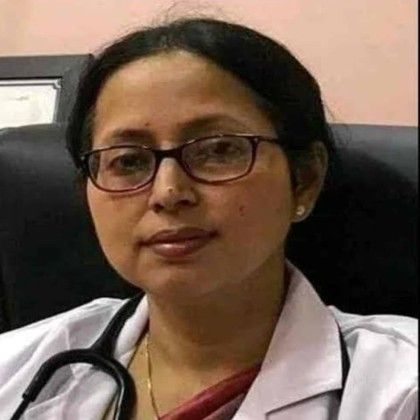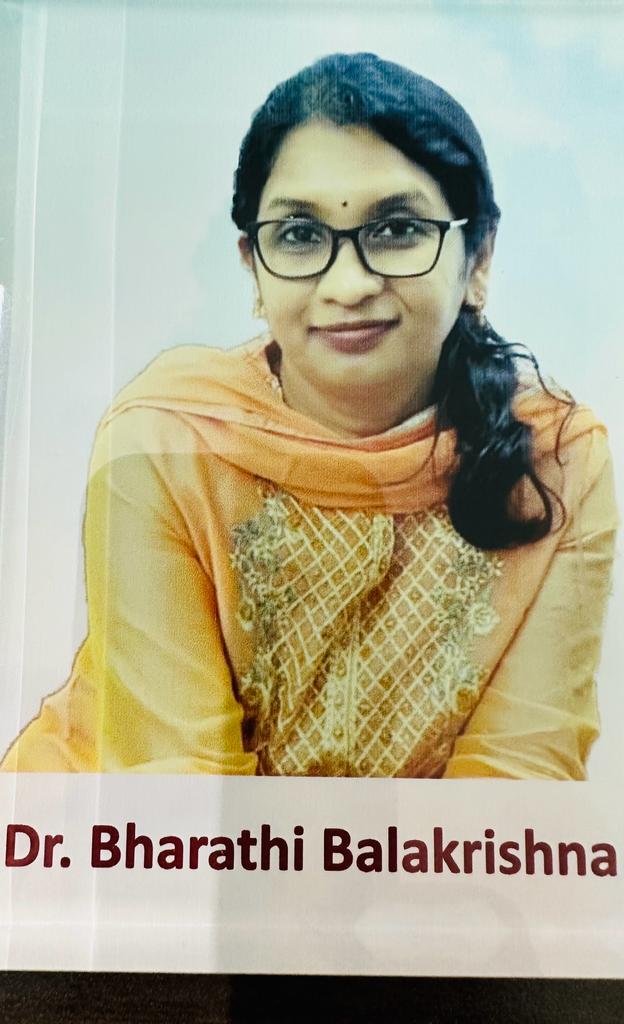Menopause and Osteoporosis: Understanding the Link
Discover the connection between menopause and osteoporosis, including risk factors, symptoms, diagnosis, and effective prevention strategies to maintain strong bone health.

Written by
Last updated on 3rd Jul, 2025
Menopause is a natural biological process that marks the end of a woman’s menstrual cycles. It typically occurs between the ages of 45 and 55, with the average age being 51. During menopause, the ovaries stop producing eggs, and levels of hormones like estrogen and progesterone decline significantly. This hormonal shift can lead to symptoms such as hot flashes, mood swings, and sleep disturbances. But beyond these well-known symptoms, menopause also has a profound impact on bone health, increasing the risk of osteoporosis. Osteoporosis is a condition where bones become weak and brittle, making them more prone to fractures. In this blog, let's learn about the connection between menopause and osteoporosis.
The Connection Between Menopause and Osteoporosis
The connection between menopause and osteoporosis is a crucial health concern, as hormonal changes during menopause can significantly impact bone density and increase the risk of fractures.
1. Hormonal Changes in Menopause Affecting Bone Density
During menopause, the decline in estrogen levels plays a critical role in bone health. Estrogen helps protect bones by slowing down the natural process of bone breakdown. When estrogen levels drop, bone loss accelerates, leading to a decrease in bone density. This rapid bone loss is most significant in the first five to ten years after menopause, making women more susceptible to osteoporosis during this period.
2. Estrogen's Role in Bone Health
Estrogen is essential for maintaining bone strength. It helps regulate the activity of osteoblasts (cells that build bone) and osteoclasts (cells that break down bone). When estrogen levels are low, osteoclast activity increases, leading to faster bone resorption (breakdown) than bone formation. This imbalance results in thinner, weaker bones, increasing the risk of fractures.
Risk Factors for Osteoporosis Post-Menopause
After menopause, various risk factors contribute to the development of osteoporosis, including hormonal changes, lifestyle choices, and genetic predisposition, making bone health a critical concern for aging women. Here are the factors for osteoporosis post-menopause:
1. Genetic Predispositions
Family history plays a significant role in osteoporosis risk. If your mother or grandmother had osteoporosis or suffered from fractures, you may be at higher risk. Genetic factors can influence bone density, bone structure, and how your body processes calcium and vitamin D.
2. Lifestyle Factors Contributing to Bone Loss
Certain lifestyle choices can exacerbate bone loss after menopause. Smoking, excessive alcohol consumption, a sedentary lifestyle, and a diet low in calcium and vitamin D can all increase the risk of osteoporosis. Additionally, being underweight or having a small frame can make bones more vulnerable to fractures.
Symptoms of Osteoporosis in Post-Menopausal Women
Recognising the symptoms of osteoporosis in post-menopausal women is essential, as this silent disease often progresses unnoticed until fractures or significant bone loss occur. Some of the common symptoms of Osteoporosis in post-menopausal women are as follows:
1. Early Warning Signs to Look For
Osteoporosis is often called a "silent disease" because it progresses without noticeable symptoms. However, some early signs may include a gradual loss of height, a stooped posture, or back pain caused by small fractures in the spine. These subtle changes can indicate that bones are weakening.
2. Advanced Symptoms and Complications
In advanced stages, osteoporosis can lead to severe complications, such as fractures from minor falls or even everyday activities like bending or coughing. Hip fractures are particularly dangerous, as they often require surgery and can lead to long-term disability or loss of independence.
Diagnosing Osteoporosis
Diagnosing osteoporosis involves a combination of medical history, bone density tests, and imaging techniques to detect bone loss early and prevent fractures.
1. Common Diagnostic Tests for Bone Density
The most common test for diagnosing osteoporosis is a Dual-Energy X-ray Absorptiometry (DEXA) scan. This painless test measures bone density in the hip and spine and compares it to the average bone density of a young adult. A T-score of -2.5 or lower indicates osteoporosis.
2. Evaluating Risk in Menopausal Women
Doctors may also assess risk factors such as age, family history, lifestyle, and medical history to determine the likelihood of osteoporosis. Tools like the FRAX® score can help predict the 10-year probability of a fracture based on these factors.
Strategies for Prevention and Management
Effective strategies for preventing and managing osteoporosis focus on maintaining bone health through proper nutrition, exercise, lifestyle modifications, and medical interventions.
1. Lifestyle Modifications to Strengthen Bones
Maintaining a healthy lifestyle is crucial for preventing osteoporosis. This includes:
- Quitting smoking
- Limiting alcohol intake
- Engaging in regular weight-bearing exercises like walking, jogging, or dancing to help stimulate bone formation and improve balance, reducing the risk of falls.
2. Medical Treatments and Therapies
For women at high risk of osteoporosis, doctors may recommend medications like:
- Bisphosphonates: Slows down bone loss
- Hormone replacement therapy (HRT): Helps maintain oestrogen levels, which thereby reduces bone loss
- Selective estrogen receptor modulators (SERMs): Mimic the effects of estrogen on bones to prevent bone loss.
- Monoclonal antibodies like denosumab: Help reduce bone breakdown and increase bone density by targeting specific proteins involved in bone resorption.
Importance of Nutrition and Exercise
Proper nutrition and regular exercise play a vital role in maintaining bone health, reducing the risk of osteoporosis, and enhancing overall well-being, especially post-menopause.
1. Calcium and Vitamin D: Essential Nutrients
Calcium and vitamin D are vital for bone health. Post-menopausal women should aim for 1,200 mg of calcium daily through diet or supplements. Vitamin D helps the body absorb calcium, and a daily intake of 800-1,000 IU is recommended. Foods like dairy products, leafy greens, and fortified cereals are excellent sources of these nutrients.
2. Recommended Exercise Routines for Bone Health
Weight-bearing and resistance exercises are particularly beneficial for bone health. Activities like walking, yoga, and strength training can help maintain bone density and improve muscle strength, reducing the risk of falls and fractures.
Hormone Replacement Therapy (HRT)
Hormone Replacement Therapy (HRT) is a common treatment option that helps manage menopause-related bone loss by replenishing estrogen levels and reducing the risk of osteoporosis.
1. Pros and Cons of HRT for Bone Health
HRT can be effective in preventing bone loss and reducing fracture risk by maintaining estrogen levels. However, it is not suitable for everyone, as it may increase the risk of blood clots, stroke, and certain cancers. Women should discuss the benefits and risks with their healthcare provider.
2. Alternative Therapies and Their Effectiveness
For those who cannot or choose not to use HRT, alternatives like phytoestrogens (plant-based estrogens) and supplements like calcium and vitamin D can help support bone health. However, their effectiveness varies, and they should be used under medical supervision.
Long-Term Implications and Care
Understanding the long-term implications of osteoporosis is essential for ensuring proper care, as ongoing management can help reduce fracture risks and maintain quality of life in aging individuals. Regular bone density tests are essential for monitoring bone health, especially in the first decade after menopause. Early detection of bone loss allows for timely intervention and reduces the risk of fractures.
Conclusion
Menopause and osteoporosis are closely linked due to the decline in estrogen levels, which accelerates bone loss. Understanding this connection is crucial for preventing and managing osteoporosis. Early detection through regular screenings and adopting preventive measures like a healthy diet, exercise, and medical treatments can significantly reduce the risk of osteoporosis and its complications. By making positive lifestyle changes, such as eating a balanced diet, staying active, and avoiding smoking and excessive alcohol, women can protect their bone health and maintain a high quality of life during and after menopause. By understanding the link between menopause and osteoporosis and taking proactive steps, women can safeguard their bone health and enjoy a vibrant, active life.
Consult Top Obstetrician and Gynaecologist, Consult Top Orthopaedician
Consult Top Obstetrician and Gynaecologist, Consult Top Orthopaedician

Dr. Alapati Jyotsna
Obstetrician and Gynaecologist
4 Years • MBBS MS Obstetrics and Gynaecology
Visakhapatnam
Apollo 24|7 Clinic - Andhra Pradesh, Visakhapatnam

Dr. Shailaja L
Obstetrician and Gynaecologist
16 Years • MBBS, MS
Bangalore
Apollo 24|7 Clinic - Karnataka, Bangalore

Dr. Veena H
Obstetrician and Gynaecologist
16 Years • MBBS DGO
Bangalore
Apollo 24|7 Clinic - Karnataka, Bangalore

Dr. Chaitali Roy
Obstetrician and Gynaecologist
28 Years • MBBS , MS (Obstetrics & Gynaecology)
Kolkata
Roy's Clinic, Kolkata

Dr. Bharathi Balakrishna
Obstetrician and Gynaecologist
31 Years • MBBS,MD (Obstetrics & Gynaecology)
Bengaluru
Sanjeevini Speciality Health Care & Diagnostic Center, Bengaluru
